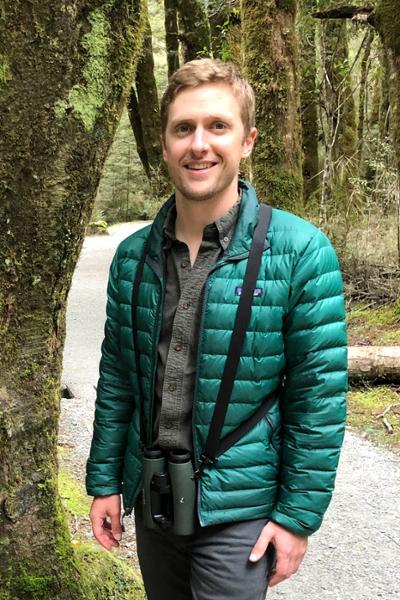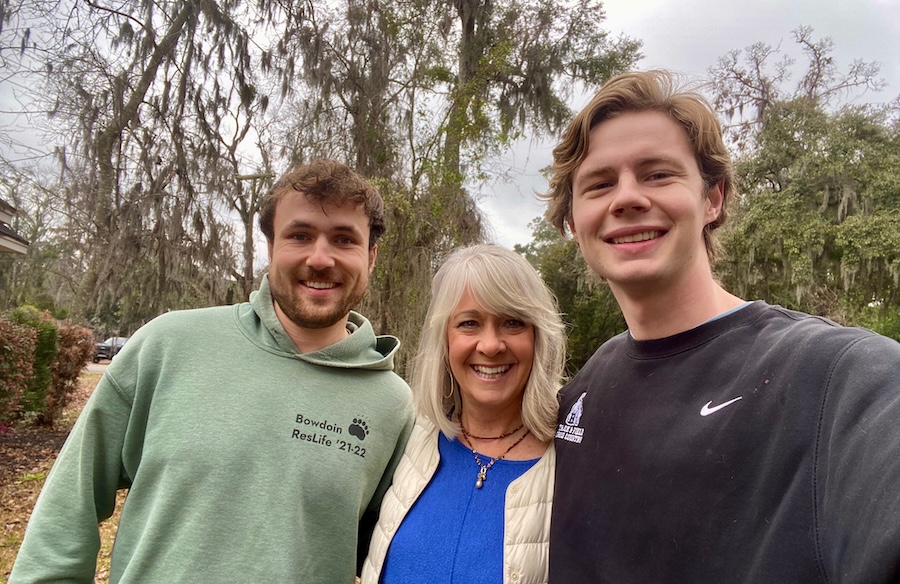Making Waves as a Natural Scientist
By Tom PorterEvan Fricke ’11 is an up-and-coming ecologist and research scientist who recently had his work published in Nature magazine. He currently works in a government-funded research center out of the University of Maryland, but says he got his first taste for field work as an undergraduate biology major visiting the Bowdoin Scientific Station on Kent Island.

Fricke writes: I am a postdoctoral fellow at the National Socio-Environmental Synthesis Center, a research center at the University of Maryland supported by the National Science Foundation. I study how animals influence the biodiversity and functioning of forests. My major focus is on birds and mammals that eat the fruits of trees and other plants and disperse their seeds. These are nature's gardeners, helping with the natural regeneration of forests and responding to challenges like climate change.
While a senior at Bowdoin, I successfully applied for a National Science Foundation graduate research fellowship. That led me to pursue a PhD at the University of Washington. As a graduate student, and later as a postdoc, I conducted field research in the Mariana Islands. On one of the islands in the chain (Guam), birds have gone extinct because of predation by an invasive snake accidentally introduced to the island in the 1940s. While the loss of birds on Guam is an ecological disaster, the situation provides a useful “natural experiment” when compared with the other snake-free islands in the chain, to help us understand how birds influence the resilience of a forest through their role as seed dispersers.
The article in Nature takes a global perspective to ask how human activities have impacted the mutually beneficial relationships between fleshy-fruited plants and the animals that disperse their seeds. While we know that animal declines and extinctions have caused the loss of these mutualistic relationships, up until now we haven't had a good sense of how species that were introduced by people influence these relationships. By compiling data collected around the world over the last seventy-five years, we found that the animal species that researchers observe dispersing plants—and the plant species that are dispersed by animals—are increasingly introduced (i.e., non-native) species. We also found that introduced species are more likely to form these relationships with other non-native species. This sort of feedback may favor a few introduced species over many native species in future ecosystems. Considering the accelerating pace at which this is occurring, and with the theoretical threat this poses to ecosystem resilience, this article calls for careful management of introduced species. It's exciting to reach a broad audience with this research by publishing in one of the highest-profile scientific journals.
"Gaining field research experience gave me a major leg up when pursuing grad school."
The data compiled as part of this project came from researchers in the field who have recorded the identity of seed-dispersing animals and the plants they disperse, and have then published those data in scientific journals. One cool part of this story is that some of the data were collected by former Bowdoin professor Nat Wheelwright*. He amassed a large dataset in Monteverde, Costa Rica, around 1980. It's awesome to see that fieldwork from decades ago is contributing to cutting-edge research today.
As a Bowdoin student, I had the opportunity to do field research at the Bowdoin Scientific Station on Kent Island, contributing to the long-term study of Leach's storm-petrels. My time on Kent Island inspired me to pursue a career in ecology and conservation. Furthermore, gaining field research experience gave me a major leg up when pursuing grad school. Institutional funding that lowers barriers to access for students to gain field experiences is an excellent way to broaden participation in ecology and conservation.
*Wheelwright is now the Anne T. and Robert M. Bass Professor of Natural Sciences Emeritus.



